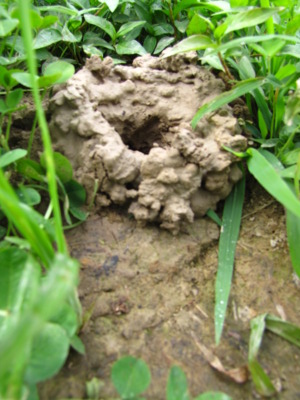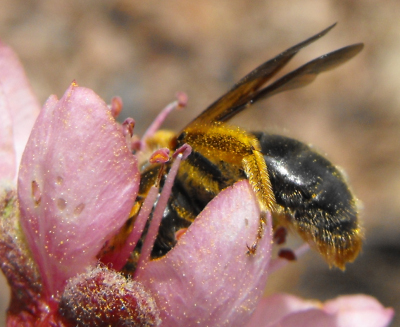
Soil mixers
 If
I asked 100 gardeners what mixes soil if you don't bring in your plow,
at least 99 of them would probably shout out "Earthworms!" And
while it's true that earthworms are vigorous soil mixers, Life in the Soil makes it clear that lots of other organisms, large and small, are also pulling their weight.
If
I asked 100 gardeners what mixes soil if you don't bring in your plow,
at least 99 of them would probably shout out "Earthworms!" And
while it's true that earthworms are vigorous soil mixers, Life in the Soil makes it clear that lots of other organisms, large and small, are also pulling their weight.
Sure, earthworms can eat
their way ten feet deep into the soil, and they add calcium to
everything that passes through their gut, resulting in very rich
castings. But did you know that areas with strong crayfish
populations can see about a ton of subsoil brought up to the surface
through the action of these crustaceans alone? Subsoil often
contains minerals that have leached out of the topsoil, so it's
especially handy to elevate this deep earth to where plants can easily
reach it. Other invertebrates that move lots of earth long
distances include ants and termites, both of which also carry plant
matter underground and produce pockets of rich soil around their nests.
Then there are the
looseners. Even though we're not keen on Japanese beetles and June
bugs, I have to admit that their grubs improve soil structure and
fertility as they travel up and  down in the soil. Ground-nesting bees and wasps like sweat bees, miner bees, and digger wasps all excavate burrows for their larvae to live in, and dung beetles fill their underground dens with rich balls of excrement. And that's not even counting the burrowing snakes, lizards, and mammals who move even more earth around.
down in the soil. Ground-nesting bees and wasps like sweat bees, miner bees, and digger wasps all excavate burrows for their larvae to live in, and dung beetles fill their underground dens with rich balls of excrement. And that's not even counting the burrowing snakes, lizards, and mammals who move even more earth around.
People email me quite
often to ask how topdressed compost can make its way deeper into soil if
we don't till, and how no-till soil can become light and fluffy.
Once they realize the rich diversity of life in no-till gardens, though,
their question answers itself. Don't plow, and the wildlife will
do your job for you.
| This post is part of our Life in the Soil lunchtime series.
Read all of the entries: |
Want more in-depth information? Browse through our books.
Or explore more posts by date or by subject.
About us: Anna Hess and Mark Hamilton spent over a decade living self-sufficiently in the mountains of Virginia before moving north to start over from scratch in the foothills of Ohio. They've experimented with permaculture, no-till gardening, trailersteading, home-based microbusinesses and much more, writing about their adventures in both blogs and books.
Want to be notified when new comments are posted on this page? Click on the RSS button after you add a comment to subscribe to the comment feed, or simply check the box beside "email replies to me" while writing your comment.
